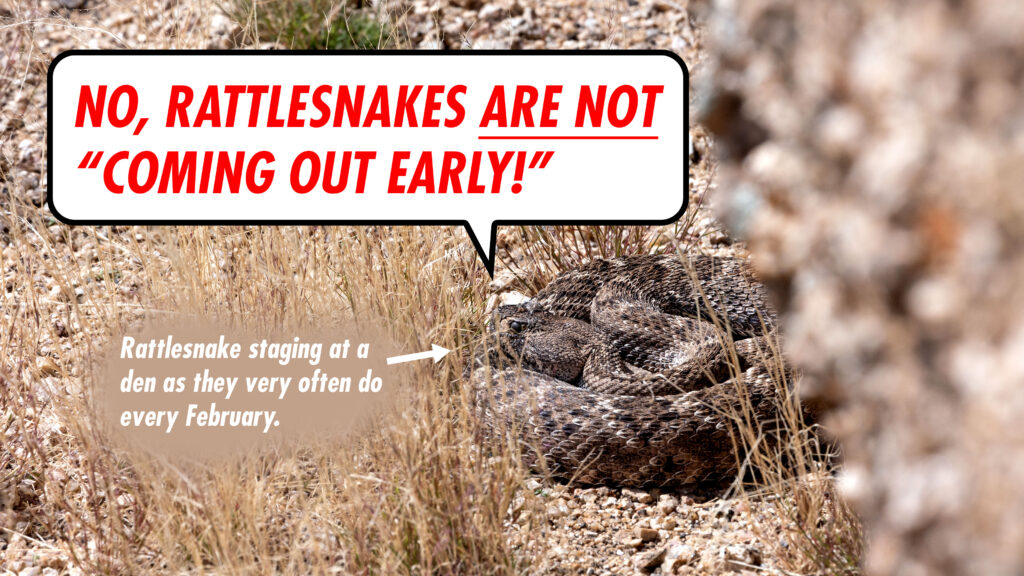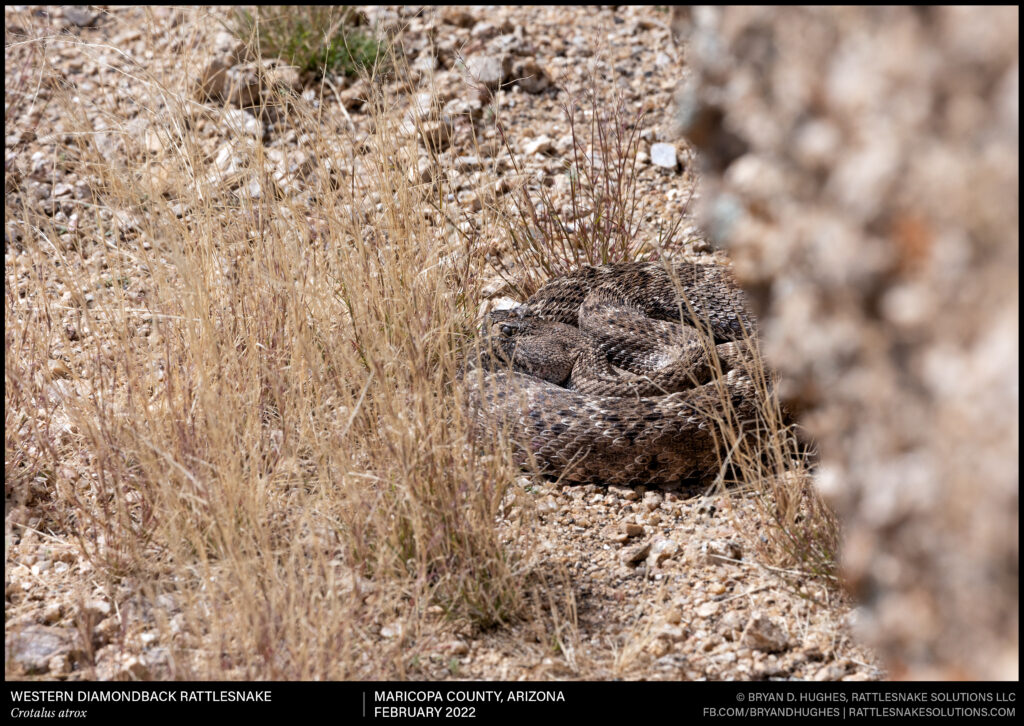
As rattlesnakes start to show up on the surface again this year, a few things are predictable. Some hikers and homeowners will report rattlesnake sightings, complete with photos of usually-sleeping snakes, with various warnings and declarations about warm winters and misreads on words like ‘brumation’.
So we’ll state plainly and to the point: rattlesnakes are not coming out early; it is typical every year for rattlesnakes to begin the early staging portion of den egress in mid-February.
This is based on our relocation data from more than 14 years of operation, as well as field observations from our team over the past 20 years. It’s also just keeping track of when these sightings tend to start each year, which is easier than ever thanks to social media. We can state with complete accuracy that the rattlesnake emergence activity right now (February 2024) is typical and going as planned.
In the next two weeks, sightings will increase, but rattlesnakes will not be out and about just yet. This “staging” part involves a lot of laying around in the sun near the entrance to their den. That might be sleeping in the grass right next to it, lounging under a nearby bush, or coiled on top of a packrat nest. They may make short movements, but are still tethered to the den until springtime conditions stabilize in March.

How to avoid rattlesnakes in the staging period of den egress
Hikers can avoid rattlesnakes right now by simply staying on the trails. If you notice, most of the posts from hikers on social media where a rattlesnake is spotted are off-trail, climbing boulder piles or other situations where seeing a rattlesnake might even be expected. In comparison, a trail with people coming and going is not a place that most rattlesnakes will want to deal with for these sensitive situations, and will avoid them. Put your dog on a leash if it isn’t already, and it’s time to put the headphones away for the year.
Homeowners who see rattlesnakes in February should know that they’ve likely been there for months at this point, and it’s possible there are others on the property. If you’re doing any work like a garage cleanout, using a grill island, anything involving the pool equipment area, or general yard cleanup, be aware that this is when rattlesnakes might show themselves. And if you do see one, AVOID the fire department’s version of “rattlesnake relocation”, which is to dump it on the other side of the fence … which this time of year would guarantee an immediate return to the place of capture or a neighbor’s property.
Rattlesnakes may be visible, but prime rattlesnake encounter time is still a month or more away
Think of what they’re doing right now like this. It’s that part of the morning where you’re getting up and pouring some coffee. Maybe you’re checking some email or texts from overnight, but you’re not getting into all that right now. You’ve got that 45 minutes or so to let your brain adjust to daytime, and those sweat pants aren’t going anywhere for now. Think of rattlesnake activity in February like this, and for many of us, it will make perfect sense.
You can keep an eye on how the overall rattlesnake season is progressing by looking at our Rattlesnake Activity Forecast: based on real-time snake relocation information coming into our hotline. As you can see for today, it’s not something to really concern yourself with.

Some easy responses to common comments about rattlesnakes in February:
“OMG they’re out early!”
No, this is very normal. Every year, rattlesnakes start the den egress process in favorable conditions starting as early as January.
“I’m done hiking for the year!”
That’s unfortunate! While the fear of rattlesnakes may be real, the danger is relatively easy to mitigate. If hiking is something you enjoy, working on learning to feel ok out there to keep hiking the other 9 months of the year may be worthwhile.
“They never go away for the winter”
Sure they do. Being on the surface at the den is part of the larger, complex behavior of hibernation. While it’s true that in some conditions rattlesnakes can be seen in specific locations at any time of year, this behavior is largely predictable and to compare behavior over the winter months to, say, April, is simply inaccurate.
